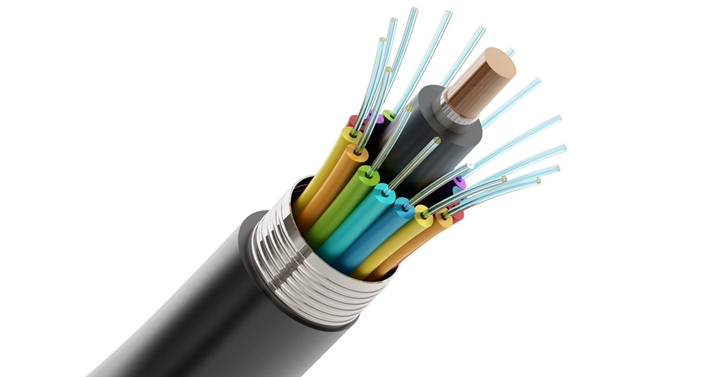Navigating the intricate world of fiber optics can be a daunting task for beginners, especially when faced with the enigma of the fiber color code. This extensive guide aims to unravel the complexities of this essential aspect of fiber optics, providing a gateway for newcomers to comprehend the intricacies of color-coded fiber optic cables. We will explore the profound significance of fiber color coding, its diverse standards, and the pivotal role it plays in the establishment and maintenance of robust fiber optic networks.
Basics of Fiber Optics:
To embark on the journey of understanding fiber color code, it is imperative to grasp the fundamentals of fiber optics. Fiber optics, as a technology, represents a revolutionary leap from traditional copper cables. It leverages the transmission of light through specialized glass or plastic fibers to facilitate high-speed data communication.
Within the realm of fiber optics, several fundamental components orchestrate seamless data transmission. The core, cladding, and protective coating collectively contribute to the efficiency and durability of fiber optic cables. As light traverses through the fiber optic cables, the precise engineering of these components ensures minimal signal loss, making fiber optics an ideal choice for modern communication infrastructures.
Significance of Fiber Color Code:
Color coding in fiber optics serves as a linchpin for effective communication and network management. The intricate web of colors woven into fiber optic cables isn’t merely for aesthetics but plays a pivotal role in the identification and differentiation of various fibers within a network.
The primary purpose of color coding is to prevent confusion during the installation, maintenance, and troubleshooting phases of a fiber optic network. In a network environment where numerous cables are interconnected, the ability to quickly and accurately identify specific fibers is paramount. Color coding becomes the language that network technicians use to decipher the intricate details of the optical fibers.
Two predominant standards govern the color coding of fiber optic cables: TIA/EIA-598 and IEC 60793-1-41. These standards prescribe a set of rules and guidelines that dictate the color assignments for fibers and buffer tubes, ensuring a uniform and standardized approach across the industry.
TIA/EIA-598 Color Code:
The TIA/EIA-598 color code stands as one of the widely adopted standards in the industry. Understanding its intricacies is essential for anyone working with fiber optic networks.
The color coding scheme outlined by TIA/EIA-598 is meticulous and serves as a roadmap for identifying specific fibers and their characteristics. In this scheme, each fiber is assigned a distinct color, enabling technicians to discern its type and properties. The colors extend beyond the fibers to include buffer tubes, creating a comprehensive system that aids in the efficient management of fiber optic networks.
Fiber identification becomes an intuitive process with the TIA/EIA-598 color code. Technicians can quickly ascertain the type of fiber and its specific attributes by decoding the colors. This standardized approach significantly reduces the likelihood of errors during installation and maintenance, streamlining the overall management of fiber optic networks.
IEC 60793-1-41 Color Code:
Complementing the TIA/EIA-598 color code, the IEC 60793-1-41 standard provides an alternative framework for color coding fiber optic cables. While the fundamental principles remain consistent, subtle differences in color assignments exist between the two standards.
The IEC 60793-1-41 color code is prevalent in international contexts and is widely adopted in regions following international standards. It is imperative for professionals in the field to familiarize themselves with both standards, ensuring adaptability and versatility in diverse network environments.
Practical Applications and Implementation:
Understanding the color codes is essential, but the true value emerges in their practical application. During the installation phase, technicians rely on the color code to seamlessly connect and organize fibers within a network. Meticulous adherence to the color code ensures precision in connecting fibers, minimizing the risk of errors that could compromise the integrity of the network.
In the realm of maintenance and troubleshooting, the color code becomes a beacon guiding technicians through the labyrinth of interconnected fibers. When faced with an issue, the ability to swiftly identify and isolate specific fibers significantly expedites the resolution process. It is akin to deciphering a code that unlocks the secrets of the network, allowing for targeted interventions and swift problem resolution.
Challenges and Considerations:
While the color code system brings order to the world of fiber optics, challenges may arise. In instances where cables from different manufacturers are integrated into a single network, discrepancies in color coding may occur. It is imperative for technicians to be vigilant and verify color codes meticulously, mitigating the risk of errors stemming from inconsistencies.
Moreover, the industry’s evolution may introduce new technologies and standards, necessitating periodic updates to existing color coding schemes. Staying abreast of these changes is crucial for professionals in the field to ensure they are working within the latest standards, guaranteeing the optimal performance of fiber optic networks.
In conclusion, the fiber color code serves as a vital thread weaving through the fabric of fiber optic networks. For beginners venturing into the realm of fiber optics, unraveling the intricacies of color coding is a fundamental step. The TIA/EIA-598 and IEC 60793-1-41 standards provide the roadmap, and understanding their nuances equips technicians with the knowledge to navigate the complex network landscape.
The color code is not merely a technicality; it is the language of fiber optics, enabling seamless communication and efficient network management. As technology continues to advance, so too will the standards governing color coding, ensuring that fiber optics remains at the forefront of high-speed data transmission.
Aspiring professionals and seasoned veterans alike must embrace the significance of the fiber color code. It is not just a system of colors; it is the key to unlocking the potential of fiber optics and, by extension, the modern digital landscape. As we continue to delve deeper into the intricacies of fiber optics, let this guide serve as a beacon, illuminating the path for beginners and enthusiasts alike.
Contact Linden Photonics to get a quote or Call Us at (978) 392-7985

